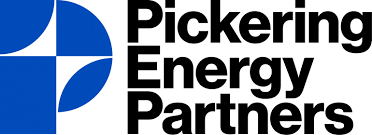By Sean Hanley, Pickering Energy Partners

The Inflation Reduction Act’s added Section 136 to the Clean Air Act, which imposed the first-ever direct “charge” on methane emissions, has put greenhouse gas (GHG) emitters on notice. With pending charges beginning in 2024 ($900/metric ton of methane exceeding the facility waste emission threshold) and escalating in 2025 ($1,200/metric ton) and 2026 ($1,500/metric ton), offshore and onshore operators need to be aware that regulatory bodies, such as the EPA, are making performance standards more stringent and working to introduce nationwide emissions guidelines.
It is imperative that operators are not only aware, but also strategizing about how to best work within the confines of these programs. Below, we’ve included a list for public and private operators on how best to navigate the coming regulatory headwinds.
- First, acknowledge the economic benefits of integrating a methane reduction strategy into operations and begin formulating a mitigation plan involving existing technology or new investment (think through equipment retrofits versus replacements).
- Be sure to remain flexible as proposed regulatory requirements may become a reality.
- Know your state-level requirements.
- Be mindful of reputational risk around the Super Emitter Response Program (threshold: 100kg, 220.5 pounds, of methane per hour). Note, the provisions are an integral part of Quad Ob, and pursuant to Quad Oc. Take steps now to ensure remediation strategies are in place.
- Conduct an analysis of operations and diagnose opportunities for improvement. Be sure to understand new intermittent-bleed pneumatic devices calculation methodologies (EPA proposed equations W-1A versus W-1B) and anticipate default operating time = 8,760 hours/year or 24/7 instead of device-weighted. Expect to survey more frequently if using W-1B to reduce the time used to account for malfunctioning controllers.
- Take a phased approach to implementing changes. Start with a reasonable number of sites for rolling out new surveillance technology.
- Think about additional partnerships/associations to join that will help keep the organization up to speed on best practices and technological advancements in relation to the changes within the regulatory environment. Consider subscribing to ONE Future (55+ member coalition spanning over 40% of the U.S. natural gas value chain) and/or The Environmental Partnership (100+ members comprised of oil and natural gas companies committed to improving the industry’s environmental performance).
- Measure the cost/benefit of certifications offered by a third party like MiQ (methane emissions independent certification standard provider).
Taking steps now will not only benefit your reputation and intangible assets but will also increase operational efficiencies to secure your bottom line. Implementing technology to “measure what you manage” will only drive better economic outcomes for all parties. Finally, remember to highlight the monitoring initiatives and GHG reduction progress in your annual ESG Report.
Energy Workforce partner Pickering Energy Partners provides insights on ESG due diligence, disclosures and reporting. Sean Hanley is Director, ESG Strategy & Implementation.




